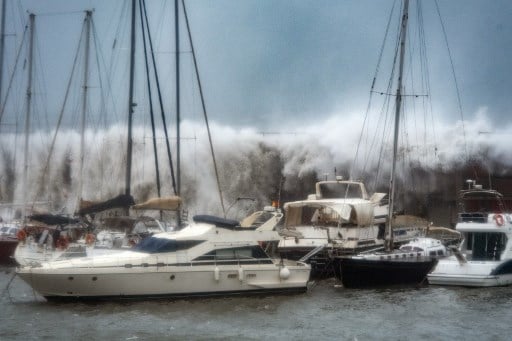The streets filled with seafoam, a natural but rare occurrence caused by the severe agitation of sea water and is completely harmless.
High winds and rough seas have caused devastation along Spain’s eastern Mediterranean coast, destroying seafront promenades and damaging buildings along them.
According to the Catalan Water Agency the foam occurs when seawater meets fresh water from a stream. The mixture stirred up by the pounding waves, plus the load of organic material in both waters, generates this abundant foam.
Here are a selection of the best images shared of the foam phenomenon in Tossa de Mar.
Flipant.#TossadeMar#Gloria pic.twitter.com/Dsi5C1hOLG
— ??? (@CulmaduMariaSER) January 21, 2020
The foam appeared to be waist-high in some parts of the town.
Vídeo en exclusiva de Tossa de Mar. La veritat l'escuma aquesta no fa gaire gràcia. pic.twitter.com/1hkGDEWIhh
— JOAN JORDANA (@jordana_joan) January 21, 2020
Here's a close up:
Plenty of sea foam in the street at Tossa De Mar, #Spain this morning 21st of January! This has been caused by large waves from #StormGloria video by ? Pikoi66 Instagram with permission; #severeweather #ExtremeWeather pic.twitter.com/ee1pSB2FMR
— WEATHER/ METEO WORLD (@StormchaserUKEU) January 21, 2020
Another view of wobbling foam.
TOSSA de MAR #Temporalgloria @meteogirones @meteocat @marcredondo @Monica_Usart @meteorac1 @Mes_324 pic.twitter.com/eDPHkLhA7o
— silviaragolta (@silviaragolta) January 21, 2020
And the clear-up operation in progress.
A Tossa de Mar l'escuma del mar ha arribat fins als carrers més propers al passeig del Mar. La majoria de comerços han hagut de tancar, i ara veïns i bombers intenten treure l'aigua #Gloria pic.twitter.com/zFSRGESAvp
— Maria Garcia (@MariutGarcia) January 21, 2020
READ ALSO:



 Please whitelist us to continue reading.
Please whitelist us to continue reading.
Member comments